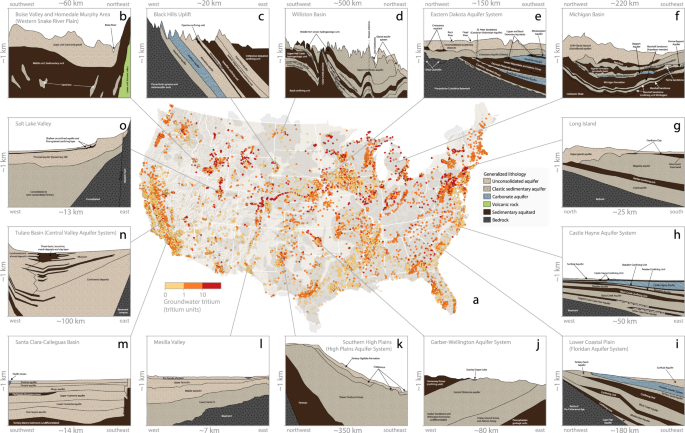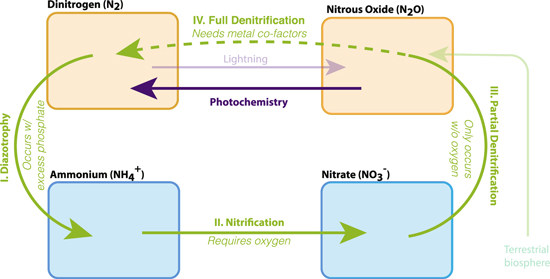2022-10-04 カリフォルニア大学サンタバーバラ校(UCSB)
米国本土の15,000の地下水井におけるトリチウムとして知られる希少な水素の濃度のデータセットを活用しました。
近隣の井戸を74の帯水層系に分類した。このため、各系統の異なる深さの地下水のトリチウム濃度を分析することができた。この測定値をもとに、各サンプルが現代の降水によるものである割合を計算した。その結果、現代の地下水の割合が25%未満であれば、「古い」地下水であると判定された。
地下水は、溶質と呼ばれる溶けた化合物を運搬する。その中には、農業用水から流出する硝酸塩のように有害なものもある。このような地表の汚染物質は、水が地中に浸透するにつれてろ過され、何年もかけて分解される。その結果、より深い井戸では、これらの汚染物質の濃度が低い古い地下水が汲み上げられます。若い地下水をより早く深く汲み上げることで、表面汚染物質を自治体や農村地域が利用する深さまで移動させる可能性がある。
<関連情報>
- https://www.news.ucsb.edu/2022/020722/slurping-groundwater
- https://www.nature.com/articles/s41467-022-32954-1
現代の地下水は、揚水量の多い帯水層においてより深い深さまで到達している Modern groundwater reaches deeper depths in heavily pumped aquifer systems
Melissa Thaw,Merhawi GebreEgziabher,Jobel Y. Villafañe-Pagán & Scott Jasechko
Nature Communications Published:07 September 2022
DOI:https://doi.org/10.1038/s41467-022-32954-1

Abstract
Deep groundwater is an important source of drinking water, and can be preferable to shallower groundwaters where they are polluted by surface-borne contaminants. Surface-borne contaminants are disproportionately common in ‘modern’ groundwaters that are made up of precipitation that fell since the ~1950s. Some local-scale studies have suggested that groundwater pumping can draw modern groundwater downward and potentially pollute deep aquifers, but the prevalence of such pumping-induced downwelling at continental scale is not known. Here we analyse thousands of US groundwater tritium measurements to show that modern groundwater tends to reach deeper depths in heavily pumped aquifer systems. These findings imply that groundwater pumping can draw mobile surface-borne pollutants to deeper depths than they would reach in the absence of pumping. We conclude that intensive groundwater pumping can draw recently recharged groundwater deeper into aquifer systems, potentially endangering deep groundwater quality.



